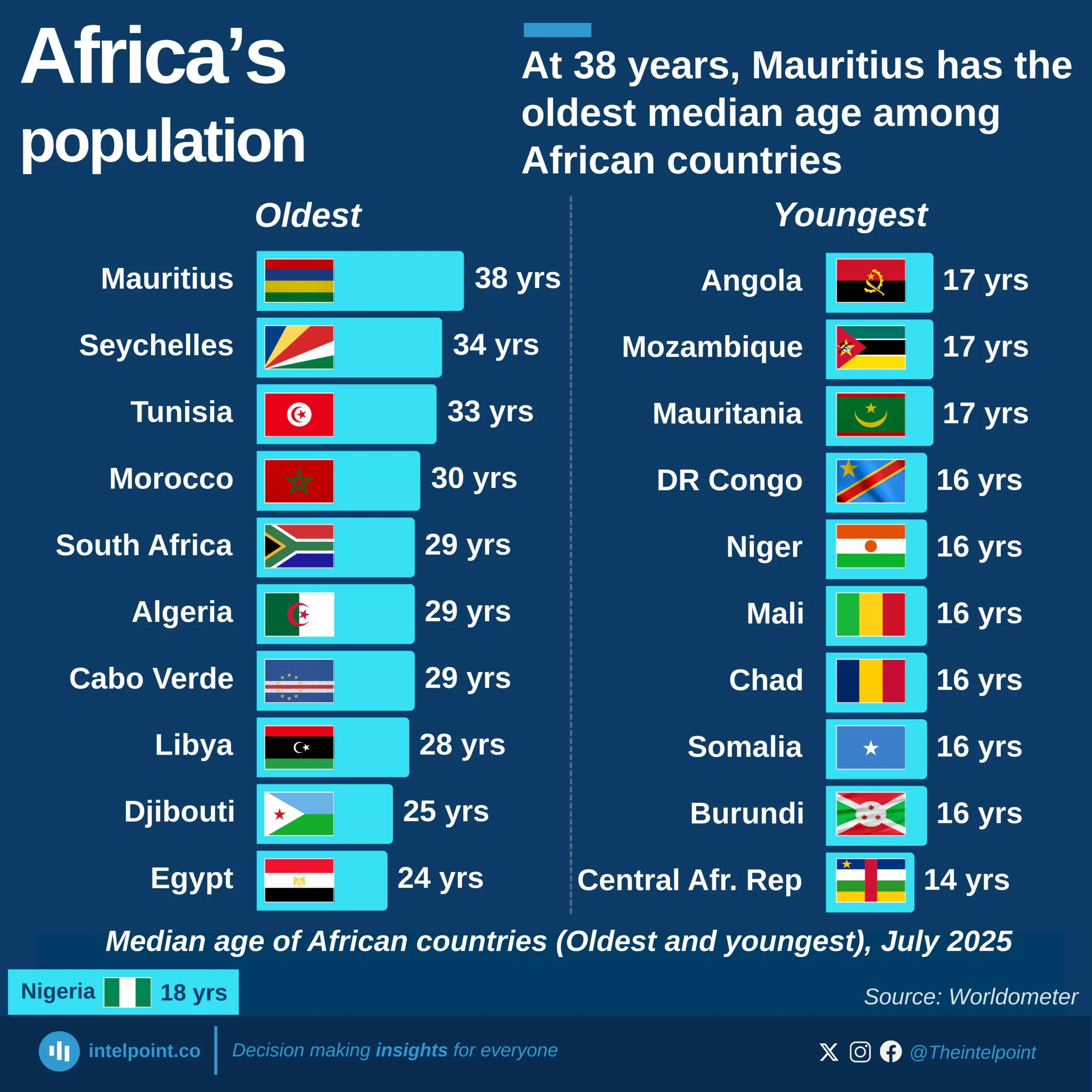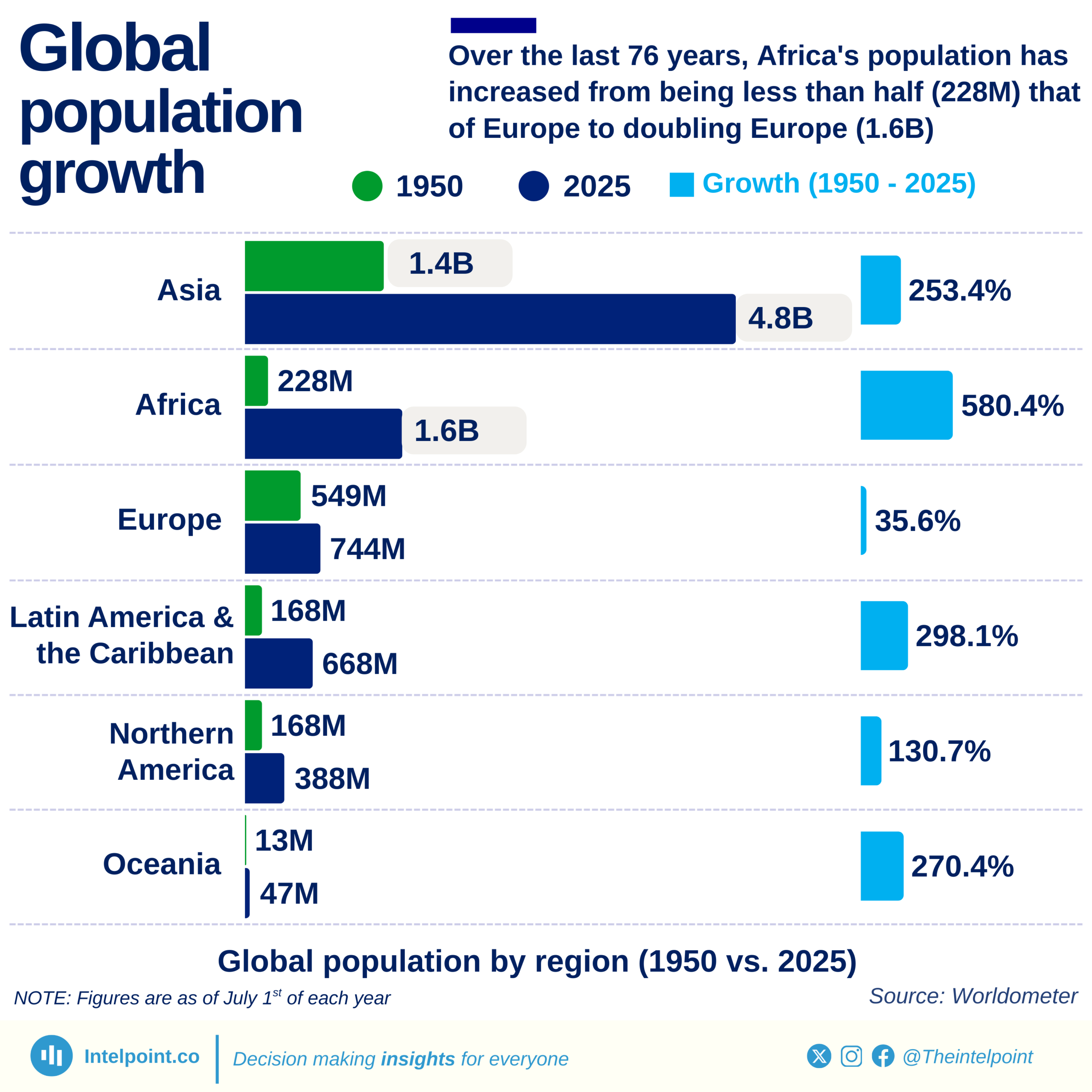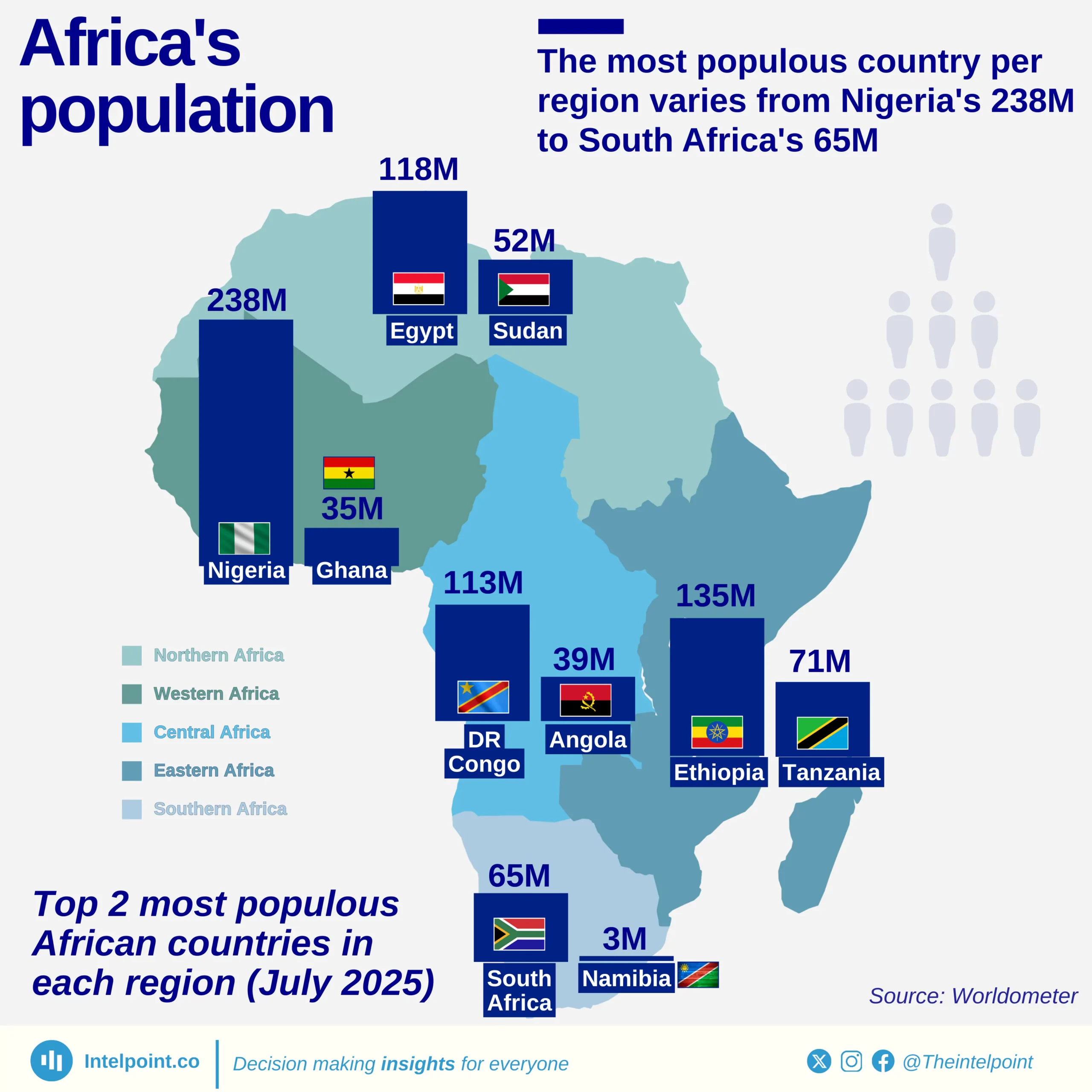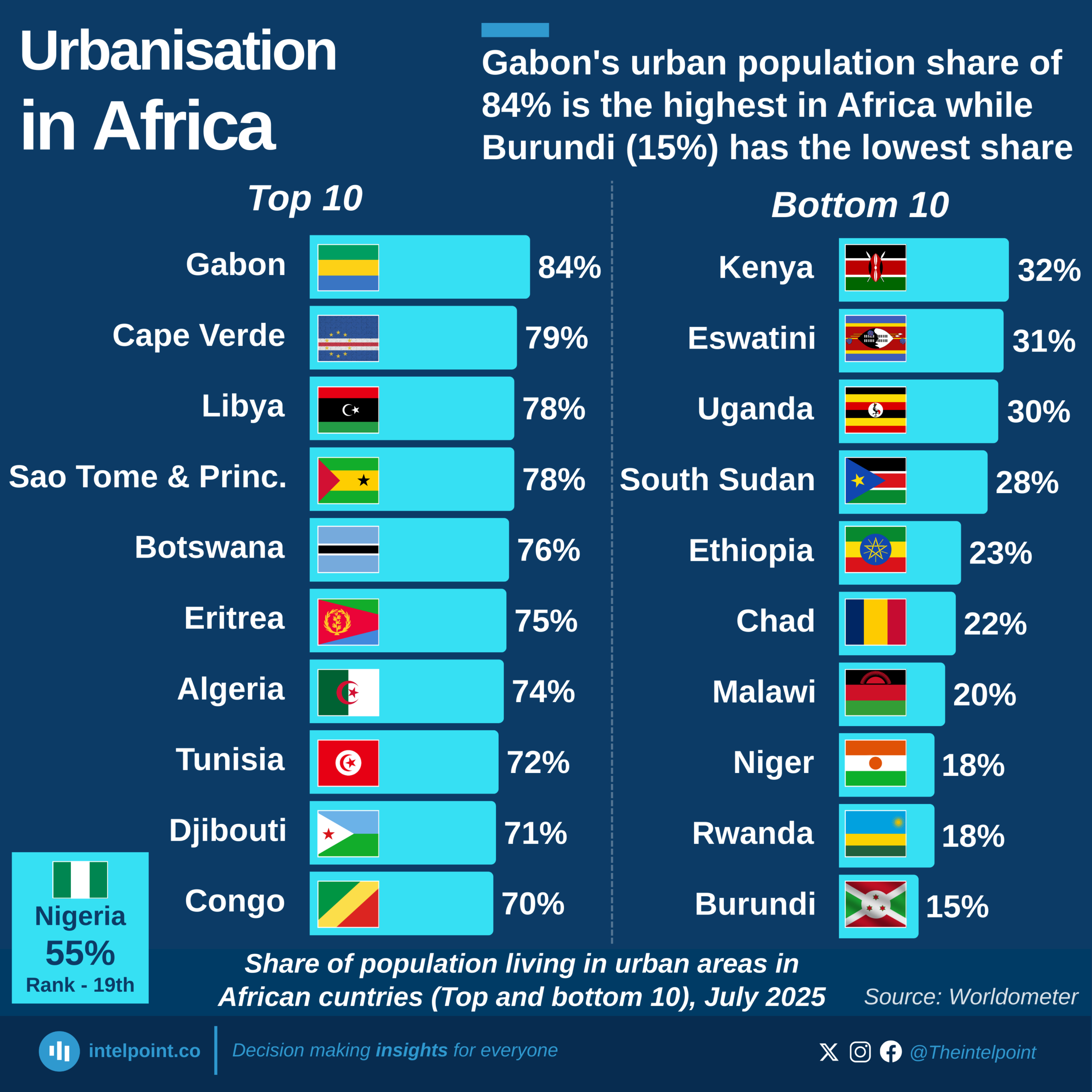The global age distribution reveals that nearly half of the world's population (47.5%) falls between the ages of 20 and 54. This age group, comprising the most economically active individuals, significantly influences global labour markets, consumption patterns, and innovation. With 1.80 billion people aged 20-34 and 2.10 billion people aged 35-54, this demographic block is pivotal in shaping the world's economic future.





